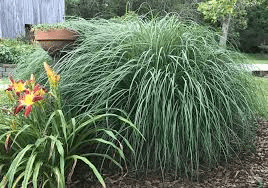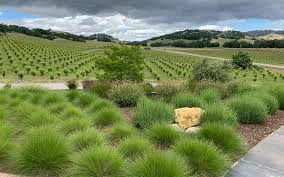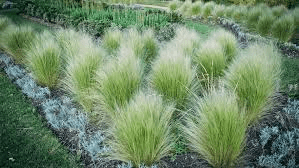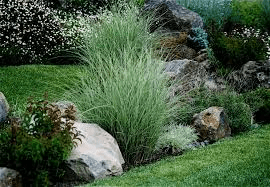Grasses are essential elements in landscaping that provide beauty, texture, and function. They are versatile plants that can adapt to various environments, making them suitable for many landscape designs. Using grasses in landscaping not only enhances the aesthetic appeal of outdoor spaces but also contributes to environmental health.
This article will explore the benefits of using grasses, the types suitable for landscaping, and how to choose grasses for different landscape designs.
Benefits of Using Grasses in Landscaping
Using grasses in landscaping offers several advantages that make them a popular choice among gardeners and landscapers. Here are some key benefits:
1. Aesthetic Appeal: Grasses add color, texture, and movement to landscapes. They can create a soft, flowing look or a more structured appearance, depending on the species and how they are arranged. For example, ornamental grasses can provide stunning visual interest throughout the seasons.
2. Low Maintenance: Many grass species are low-maintenance, requiring minimal care once established. They often need less water and fertilizer compared to other plants, making them an economical choice for homeowners. For instance, native grasses are adapted to local conditions and thrive without much intervention.
3. Erosion Control: Grasses have deep root systems that help hold soil in place, preventing erosion. This is particularly important on slopes and areas prone to runoff. For example, planting grasses on a hillside can stabilize the soil and reduce the risk of erosion.
4. Habitat for Wildlife: Grasses provide habitat and food for various wildlife, including birds, insects, and small mammals. For instance, native grasses can attract pollinators like bees and butterflies, supporting local ecosystems.
5. Environmental Benefits: Grasses play a significant role in improving air quality and reducing carbon dioxide levels. They also help filter water runoff, promoting cleaner waterways. For example, grasses in a rain garden can absorb excess water and improve water quality.
Types of Grasses Suitable for Landscaping

Choosing the right type of grass for landscaping depends on several factors, including climate, soil type, and intended use. Here are some common types of grasses suitable for landscaping:
1. Kentucky Bluegrass (Poa pratensis): This cool-season grass is known for its lush, green appearance and dense growth. It is ideal for lawns and can withstand heavy foot traffic. For example, Kentucky bluegrass is often used in residential lawns and parks.
2. Perennial Ryegrass (Lolium perenne): A fast-growing cool-season grass, perennial ryegrass germinates quickly and establishes rapidly. It is perfect for quick patches and overseeding. For instance, it is commonly used in sports fields due to its durability.
3. Bermuda Grass (Cynodon dactylon): This warm-season grass thrives in sunny areas and is drought-tolerant. It is ideal for lawns, golf courses, and athletic fields. For example, Bermuda grass is often used in southern regions for its resilience.
4. Fescue (Festuca spp.): There are several types of fescue, including tall fescue and fine fescue. Tall fescue is drought-resistant and suitable for transitional zones, while fine fescue is ideal for shaded areas. For instance, fine fescue can thrive under trees where sunlight is limited.
5. Zoysia Grass (Zoysia spp.): This warm-season grass is known for its thick growth and tolerance to heat and drought. It is suitable for lawns and can handle moderate foot traffic. For example, zoysia grass is popular in the southern U.S. for its ability to withstand heat.
6. Ornamental Grasses: Many grasses are cultivated for their ornamental value. Examples include fountain grass (Pennisetum alopecuroides) and blue fescue (Festuca glauca). These grasses add visual interest with their unique shapes and colors. For instance, fountain grass features beautiful plumes that sway in the breeze.
Grasses for Different Landscape Designs
When selecting grasses for landscaping, it’s essential to consider the overall design and purpose of the space. Here are some tips on choosing grasses for various landscape designs:
1. Formal Gardens: In formal gardens, use grasses with a structured appearance and uniform growth habits. Examples include feather reed grass (Calamagrostis acutiflora) and miscanthus (Miscanthus sinensis). These grasses can create clean lines and add elegance to the design.
2. Informal Gardens: For a more relaxed, natural look, choose grasses that have a softer, flowing appearance. Ornamental grasses like switchgrass (Panicum virgatum) and prairie dropseed (Sporobolus heterolepis) can create a whimsical feel. For example, grouping these grasses together can mimic a meadow landscape.
3. Xeriscapes: In dry or drought-prone areas, opt for drought-tolerant grasses like buffalo grass (Buchloe dactyloides) or blue grama (Bouteloua gracilis). These grasses require minimal water and are ideal for low-maintenance landscapes. For instance, buffalo grass is perfect for creating a sustainable lawn.
4. Shade Gardens: If you have shaded areas, select grasses that thrive in low-light conditions. Fine fescue and certain types of sedges (Carex spp.) are excellent choices. For example, creeping red fescue (Festuca rubra) can thrive in shady spots and add greenery to otherwise challenging areas.
5. Coastal Landscapes: In coastal regions, choose salt-tolerant grasses like seashore paspalum (Paspalum vaginatum) or dune grass (Elymus mollis). These grasses can withstand harsh coastal conditions and help stabilize sandy soils. For instance, planting dune grass along shorelines can prevent erosion.
6. Wildflower Meadows: For a naturalistic landscape that combines grasses with wildflowers, consider native grasses that support pollinators. Grasses like little bluestem (Schizachyrium scoparium) work well with wildflowers like coneflower (Echinacea spp.) and black-eyed Susan (Rudbeckia hirta). For example, this combination creates a vibrant, biodiverse meadow.
Read Also: Sheep gene insights could help farmers breed healthier animals
Choosing the Right Grass for Your Climate

Selecting the right grass for your specific climate is crucial for successful landscaping. Here are some tips to help you choose:
1. Identify Your Climate Zone: Understanding your climate zone will help you determine which grasses are suitable for your area. The USDA Plant Hardiness Zone Map is a useful tool for this.
2. Cool-Season Grasses: If you live in a cooler climate, opt for cool-season grasses like Kentucky bluegrass or fescue. These grasses thrive in spring and fall when temperatures are moderate.
3. Warm-Season Grasses: In warmer climates, choose warm-season grasses like Bermuda grass or zoysia grass. These grasses grow best in the summer when temperatures rise.
4. Drought Resistance: If you live in an area with limited rainfall, consider drought-resistant grasses like buffalo grass or certain fescues. These grasses require less water and can thrive in dry conditions.
5. Local Adaptation: Native grasses are often the best choice for local climates. They are adapted to regional conditions and typically require less maintenance. Research which native grasses thrive in your area.
Maintenance and Care for Landscape Grasses
Proper maintenance is key to keeping your landscape grasses healthy and attractive. Here are essential care tips:
1. Watering: Water grass deeply but infrequently. This encourages deep root growth. Typically, grasses need about 1 to 1.5 inches of water per week, including rainfall. Use a rain gauge to measure the amount of water applied.
2. Mowing: Mow grass to the appropriate height for the species. Cool-season grasses should be mowed to about 2.5 to 4 inches, while warm-season grasses can be kept shorter, around 1 to 3 inches. Regular mowing helps maintain health and appearance.
3. Fertilizing: Fertilize grasses according to their needs. Cool-season grasses benefit from fertilizer in early spring and fall, while warm-season grasses thrive with fertilization in late spring and summer. Use a soil test to determine nutrient needs.
4. Aeration: Aerate lawns to improve air circulation and water penetration. This is especially important for compacted soils. Aerate in the fall for cool-season grasses and in the spring for warm-season grasses.
5. Weed Control: Keep an eye out for weeds and manage them promptly. Use mulching, hand pulling, or herbicides, depending on the situation. Healthy grasses can outcompete weeds, so maintaining strong growth is vital.
Common Challenges in Grass Landscaping
While grasses are generally easy to maintain, there are some common challenges that can arise in landscaping:
1. Pest Infestations: Insects like grubs and aphids can damage grass. Monitor for signs of pest activity and treat accordingly, using organic or chemical controls as needed.
2. Diseases: Grass diseases like brown patch and dollar spot can affect lawns. Maintain proper care practices to minimize disease risk and consult local extension services for treatment options.
3. Soil Compaction: Heavy foot traffic can lead to soil compaction, making it hard for roots to grow. Aerating the soil regularly can help alleviate this issue.
4. Watering Issues: Overwatering or underwatering can stress grasses. Establish a consistent watering schedule and adjust based on rainfall and climate conditions.
5. Climate Change Effects: Changes in weather patterns can impact grass health. Monitor your lawn and adjust care practices accordingly to ensure the best results.
Read Also: 17 Medicinal Health Benefits Of Mucuna pruriens (Monkey Tamarind)
Sustainable Practices in Grass Landscaping

Implementing sustainable practices in grass landscaping is essential for long-term health and environmental benefits. Here are some sustainable tips:
1. Choose Native Grasses: Native grasses are adapted to local climates and require less water and maintenance. They also support local wildlife and ecosystems.
2. Reduce Chemical Use: Minimize the use of chemical fertilizers and pesticides. Instead, opt for organic alternatives and natural pest management strategies.
3. Implement Rain Gardens: Create rain gardens using grasses to absorb excess rainwater and reduce runoff. This helps filter pollutants and improves water quality.
4. Practice Mulching: Apply organic mulch around grass areas to retain moisture, suppress weeds, and enrich the soil as it decomposes.
5. Use Efficient Irrigation: Consider drip irrigation or smart sprinklers that adjust watering based on weather conditions. This conserves water and promotes healthy grass growth.
Incorporating grasses into landscaping provides numerous benefits, including aesthetic appeal, low maintenance, and environmental advantages. By selecting the right types of grasses and understanding their roles in various landscape designs, beginners can create beautiful and functional outdoor spaces.
Whether aiming for a formal garden, a drought-tolerant xeriscape, or a wildflower meadow, grasses can enhance any landscape while supporting local ecosystems. Embracing grasses in landscaping not only improves visual beauty but also contributes to a healthier environment for all.
Do you have any questions, suggestions, or contributions? If so, please feel free to use the comment box below to share your thoughts. We also encourage you to kindly share this information with others who might benefit from it. Since we can’t reach everyone at once, we truly appreciate your help in spreading the word. Thank you so much for your support and for sharing!
Read Also: 4 Steps to help an Orange Tree Produce Sweet Oranges
Frequently Asked Questions
We will update this section soon.

